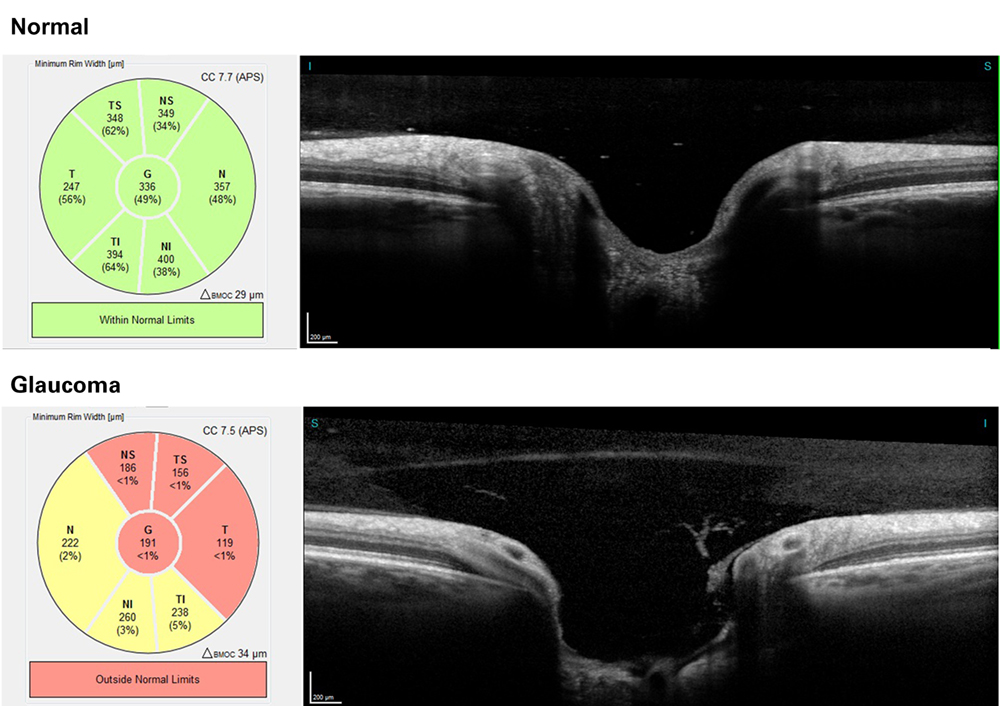Glaucoma
The term glaucoma refers to eye diseases associated with damage to the neurons in the eye. These are the cells that carry vision signals from the eye to the brain.
One of the key risk factors for glaucoma is high pressure in the eye. The disease progresses very slowly over the years. Due to the slow progression of the disease, early stage sufferers often do not notice any loss in vision.
There are a number of very effective treatments for glaucoma, and early treatment is necessary to preserve vision.
(click to enlarge the image)
What is an OCT examination?
“OCT” is short for “optical coherence tomography” a modern imaging technique like MRI or sonogram, which shows doctors structures inside the eye that can change due to eye disease.
What are medical benefits of the OCT examination?
Careful examination and analysis of the structures seen in OCT images can help doctors identify early signs of eye diseases like glaucoma and AMD.

In fact, OCT is so sensitive, it often shows doctors signs of disease before you notice any changes in your vision. This is a tremendous advantage to you; because, studies have proven that starting treatment early is the best way to save vision. OCT is also helpful for confirming whether your treatment is working or if alternate treatments should be considered.


